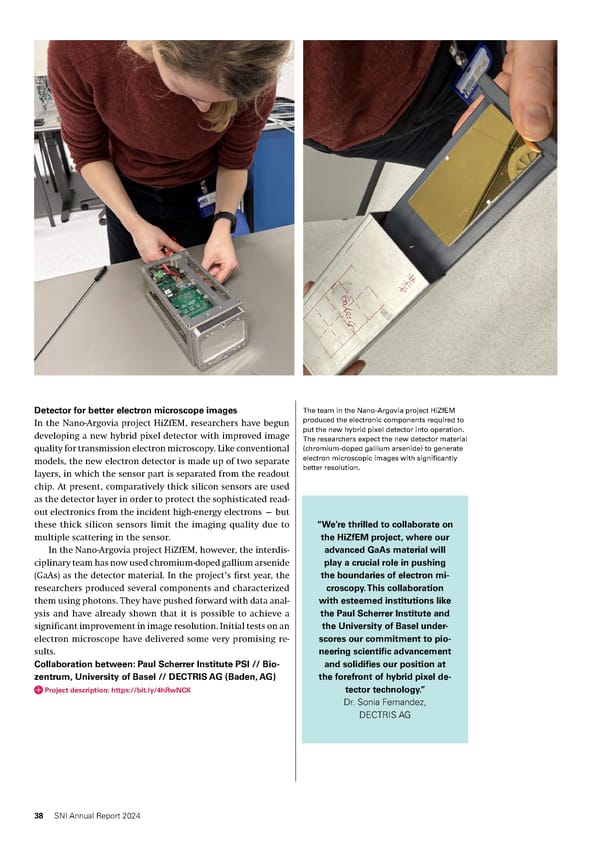Detector for better electron microscope images The team in the Nano-Argovia project HiZfEM In the Nano-Argovia project HiZfEM, researchers have begun produced the electronic components required to developing a new hybrid pixel detector with improved image put the new hybrid pixel detector into operation. The researchers expect the new detector material quality for transmission electron microscopy. Like conventional (chromium-doped gallium arsenide) to generate models, the new electron detector is made up of two separate electron microscopic images with significantly layers, in which the sensor part is separated from the readout better resolution. chip. At present, comparatively thick silicon sensors are used as the detector layer in order to protect the sophisticated read- out electronics from the incident high-energy electrons — but these thick silicon sensors limit the imaging quality due to “We’re thrilled to collaborate on multiple scattering in the sensor. the HiZfEM project, where our In the Nano-Argovia project HiZfEM, however, the interdis- advanced GaAs material will ciplinary team has now used chromium-doped gallium arsenide play a crucial role in pushing (GaAs) as the detector material. In the project’s first year, the the boundaries of electron mi- researchers produced several components and characterized croscopy. This collaboration them using photons. They have pushed forward with data anal- with esteemed institutions like ysis and have already shown that it is possible to achieve a the Paul Scherrer Institute and significant improvement in image resolution. Initial tests on an the University of Basel under- electron microscope have delivered some very promising re- scores our commitment to pio- sults. neering scientific advancement Collaboration between: Paul Scherrer Institute PSI // Bio- and solidifies our position at zentrum, University of Basel // DECTRIS AG (Baden, AG) the forefront of hybrid pixel de- Project description: https://bit.ly/4hRwNCK tector technology.” Dr. Sonia Fernandez, DECTRIS AG 38 SNI Annual Report 2024
 Annual Report 2024 - Swiss Nanoscience Institute Page 37 Page 39
Annual Report 2024 - Swiss Nanoscience Institute Page 37 Page 39